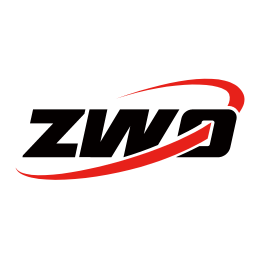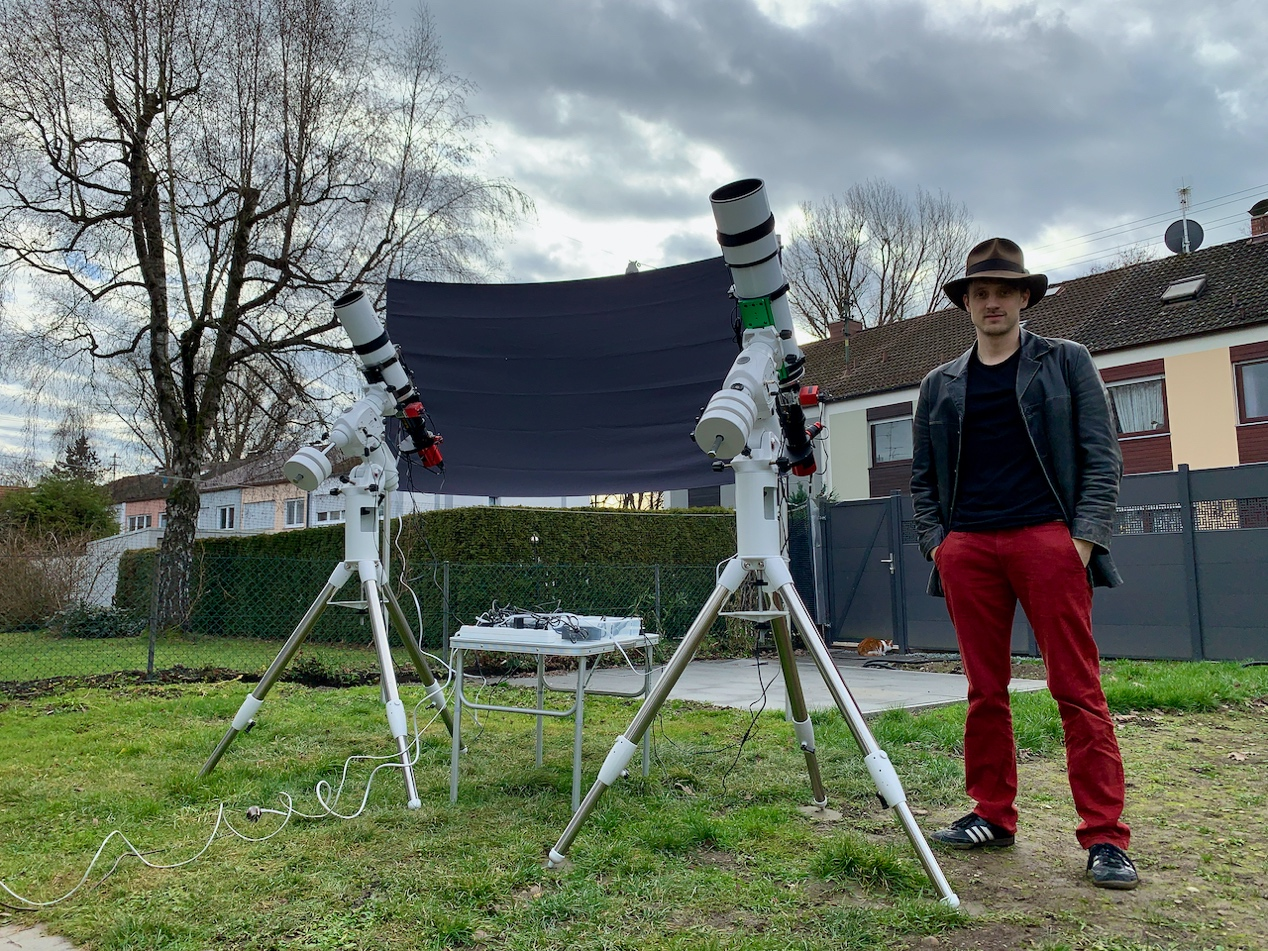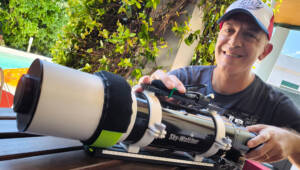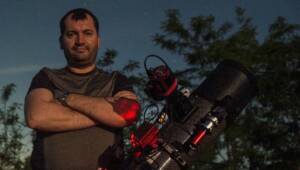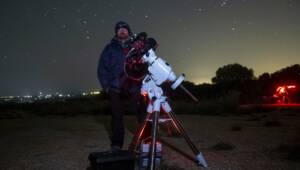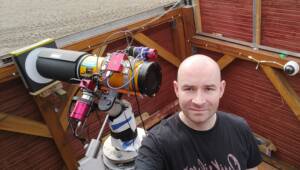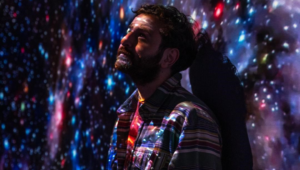Hello Dominik, thanks for accepting our interview invitation. Congratulations for winning ASIWEEK competition in week #32 2022!
Q1: Could you please make a self-introduction first?
Hi, my name is Dominik Weinbrenner and I take photos of deep-space objects. I am located in Augsburg, one of the oldest cities in Germany.

Q2: What makes you become an astrophotographer and how long have you been?
My father owns a twenty-year-old Vixen rig consisting of a computerized GP-DX mount with SkySensor2K and an 8” Newtonian (R200SS). Back in February 2021, initially planned as a one-off event, I used my unmodified Nikon D3200 with a simple T-ring adapter on the R200SS and shot M42, the Orion Nebula. Due to the horizon-limited location at the time, I was only able to shoot for about ten minutes. Before packing up, we slewed to M51 and I was exposed for 60 seconds just for fun. In the small preview on the camera display, I did not see the galaxy at first glance which is why decided to not further follow up and pack up for the night. When checking the image on the PC later that night, against any expectations, I saw faint structures M51.

That was the exact moment, my astrophotography journey started. From there, it quickly became apparent that investments are necessary to achieve better results. I plunged down the rabbit hole.
Q3: Do you have any other hobbies besides astrophotography? Do you think is there any connection between them?
Besides AP I enjoy playing with high-end free-spinning yoyos. This story is very related to AP in the way that I became hooked immediately after trying my first free-spinning yoyo in 1997. Today, I not only play with these but also design, manufacture, and sell them worldwide as a small business (ilyy.de).

As with any skill toy, yoyoing requires a dedicated approach with hours and hours of learning and training. Being familiar with such learning curve concepts helps with AP as a whole as well, as I was aware of the amount of time needed to improve and develop my AP skillset.
Q4: As to your winning image, The Veil Nebula, would you please tell us how did you capture it? Would you like to share with us some detailed camera settings?
The image was taken throughtout fourteen partial nights using my ASI2600MM with Astronomik filters through a WO Redcat51 (11h Ha, 8h O3, 10 min RGB). The IMX571 sensor was used at gain 100 with 5m subs for narrowband and 10s subs for RGB. This great sensor does not need much consideration, it works perfectly fine at gain 100 for almost all targets and circumstances. Data was captured using my ASIAIR Pro.

Q5: We all know that astrophotography is a very difficult hobby with a very high threshold, so how did you overcome the steep learning curve?
I mentioned further up I am very familiar with steep learning curves and the dedication required to overcome difficulties. A good strategy is to immerse yourself completely in the topic when starting with reading and watching everything on the topic you can get your hands on. The same goes for the processing of acquired data. Image processing is a skill on its own and requires even more dedication.

Q6: Where do you usually take astrophotos, somewhere remote from home or just in your backyard?
All my images are taken from my backyard in Augsburg using two individual rigs. Street lamps are a problem but can be blocked with sails pretty effectively.
I have no plans for building an observatory in my backyard even though there would be enough room to do so. I have yet to see an observatory that does not look out of place in the general backyard context. Even though this means, the rigs must be set up for every session, which is more work, it is usually done within fifteen minutes and thus not a big deal.

Q7: What do you think astrophotography has brought to your life? Does it change you in any sort?
AP gave me a way to express myself through my images and processing. It is also great to see the supporting community of astrophotographers around the world which produce amazing and unbelievable results.
Even though automation is very strongly present in current AP tech, I sleep less than before starting with astrophotography.

Q8: What gear do you use, any photos of them?
As of today, I use Sky-Watcher EQ6-R mounts and Esprits (100mm & 120mm) as OTAs and mostly ZWO equipment in the imaging train (OAG-Ls, ASIAIRs, EFWs). I only shoot in mono using two ASI2600MMs with Astronomik 36mm LRGBHSO filters.


Q9: Do you often discuss astrophotography with your family or friends? Will they join you on the imaging nights?
While they enjoy the final images and facts of the captured objects, I image and process them on my own.

Q10: Are there anyone who inspired you when you were into this hobby at the very start?
Nico Carver of nebulaphotos.com surely inspired me to dive into this hobby after seeing his tutorials and what is possible even with modest equipment.
My father motivated me to invest my time into this hobby and has always been very supportive.

Q11: If you are asked to choose 3 words to sum up your AP experience over these years, which 3 words will you use and why?
- Planning: Find out what you want to image next and plan your acquisition based on visibility, moon phase, bands, etc. There is nothing worse than being under clear skies and having no idea what to image.
- Preparation: Always make sure that everything works before you are under the stars. Bring as much backup equipment as possible.
- Processing: Proper image calibration and processing is essential in AP. Spending a lot of money on good equipment and a lot of time on finding and fixing issues with tracking and guiding, tilt or back focus will be ‘wasted’ if subsequent (pre-)processing is not performed with the same dedication.

Q12: Do you have any suggestions for the people who want to buy their first ASI cameras?
Budget aside, choose your model based on what you want to achieve (OSC vs Mono) and your setup (pixel scale, corrected FOV). Read guides on setups and tools.

Q13: What new ASI products do you expect?
I would love to see a way to automate FOV rotation.
Also, an advanced mode for experienced users of ASIAIR with more power-features (sequencer) would be very well received.

Q14: Would you like to share with us your project plans in the future?
For winter 2022/2023 I planned to shoot most of the classics in Orion.
For 2023 in general, I plan to re-visit bright emission nebulae using an LRGB approach without narrow band to focus on natural looks more.

